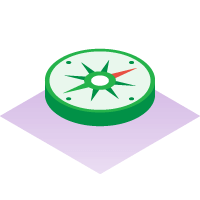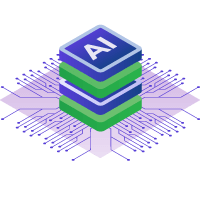2020 challenged all of us. Remote work forced many companies to rethink their QA processes and the tools and methods they use for software testing. Consumers and customers continued to expect high-quality products, and software development teams needed to maintain their pace of delivery and even speed up in order to stay competitive.
Many companies moved towards an Agile way of working or adopted BDD, which gave testers, developers, and business analysts a common language to work together and collaborate.
Indeed, 2020 proved that the culture of software testing continues to evolve.
Let's take a look into the future and the top trends we expect to see in 2021.
- Robotic Process Automation;
- Exploratory Testing;
- Data-driven testing;
- Continuous Testing;
- Artificial Intelligence & Machine Learning.
1. Robotic Process Automation (RPA)

Many organizations will continue to invest in RPA in order to deliver products even faster to consumers. Robotic Process Automation (RPA) is a productivity tool that allows users to configure one or more scripts (commonly referred to as “bots”) to activate specific keystrokes in an automated fashion. RPA plays a significant role in digital transformations and helps organizations reduce efforts on repetitive tasks like batch loan processing and corporate batch transaction handling, which consume an immense amount of time. Since the delivery of the product is predicted to be faster and automated using bots, there should be proper and relevant testing strategies that are defined, planned, and executed.
As a tester, the first and most important task is to understand the business process of the workflow via the Process Definition Document (PDD) and the Solution Design Document (SDD). The next stage is to draft the scenarios and develop the test scripts more concisely and clearly. The most important aspect of testing an RPA process is the test data. Without identifying valid test data, process automation testing can lead to inaccurate results and invalid defects.
2. Exploratory Testing

In 2020, we saw the resurgence of Exploratory Testing as testers looked to non-scripted ways of testing their software and improving quality. Exploratory Testing is used by testers to set specific goals, then time-box their session and dynamically explore a system with their knowledge instead of executing scripted test cases. This ensures the application’s stability on various undocumented scenarios. When a tester has good domain and application knowledge, Exploratory Testing is a great method that allows testers to think strategically and test the application as a real user.
In 2020, Xray released the Xray Exploratory App, an exploratory testing companion that eases the process of ET. With this app, testers can timebox their session, record videos, make audios, take notes, and do annotations during their session. They can easily export their session into a PDF document and share their insights with their team. XEA also connects directly with Xray and Jira, so that testers can create an exploratory test issue and mark it as Pass/Fail.
3. Data-driven testing

This might sound a bit old-school, but data-driven testing will again trend in 2021 as many organizations still perform individual tests for every data set which is time-consuming. To overcome this, it’s always best practice to have a single dataset containing different test data for a test script written. This will be very useful when you are running regression tests.
In the first quarter of 2021, Xray will support data-driven testing and test parameterization. Within Xray, data-driven testing will allow you to have multiple executions in a test case. Through data-driven testing and test parameterization you can cover different scenarios that are common for users. This will help testers better organize and execute multiple amounts of tests in different scenarios, thus saving them time and resources.
4. Continuous Testing (CT)

If you’re an organization that’s thinking about adopting a DevOps culture, you should certainly consider doing continuous testing directly from the planning phase. Testing should be integrated as part of the build pipeline as this will ensure the stability of the build on the spot without any manual intervention. The Continuous Testing (CT) phase mainly contains two parts, smoke and regression test execution, but it can be customized depending on the project or organization.
Continuous Testing is not only restricted to the DevOps pipeline, testers should invest efforts in identifying the right tests to be executed as smoke and regression. Periodic checks will ensure the right set of tests are running in the pipeline. Also, if your team is following Agile, make sure the team is following in-sprint automation to script and execute the automated tests. By doing this, the build pipeline will execute the tests relevant for the current sprint as well.
5. Artificial Intelligence/Machine Learning

AI/ML will again trend in 2021 as Artificial Intelligence improves efficiency, reduces human errors and increases overall test coverage. There are many trustworthy and reliable test automation tools evolving with AI capability that will reduce the efforts for script creation and maintenance. The trend of writing tests in simple English, and converting them to automated scripts is an amazing way for the testing industry to show its evolution.
The use of AI/ML-based testing tools significantly increased this year as many organizations wanted to release their products much faster, but tested thoroughly in a shorter span of time. AI tests can run repeatedly and thus significantly reduce the effort of manual testing.
Embracing change and new software testing trends
Now in 2021, organizations will be expected to step up and embrace new methods of working together in order to increase quality and deliver products at a competitive pace.
AI/ML-based testing tools will help speed the delivery of products while exploratory testing will improve quality through unscripted testing. RPA tools will speed the delivery of products and help reduce manual work from testers so they can focused on other types of testing like exploratory.
Finally, data-driven testing will eventually rule the automation world with its capabilities to parameterize tests which could eventually run in parallel, helping companies save time and get an effective return on investment.


